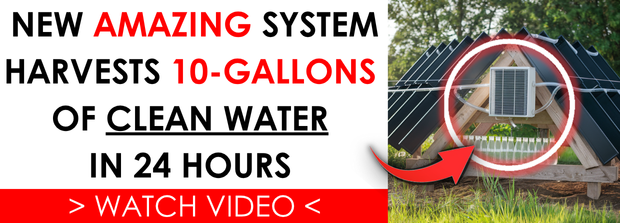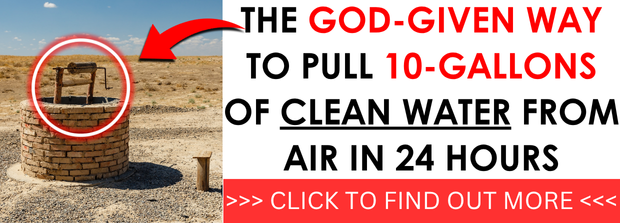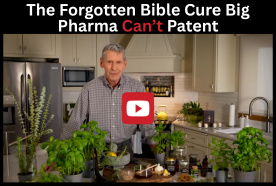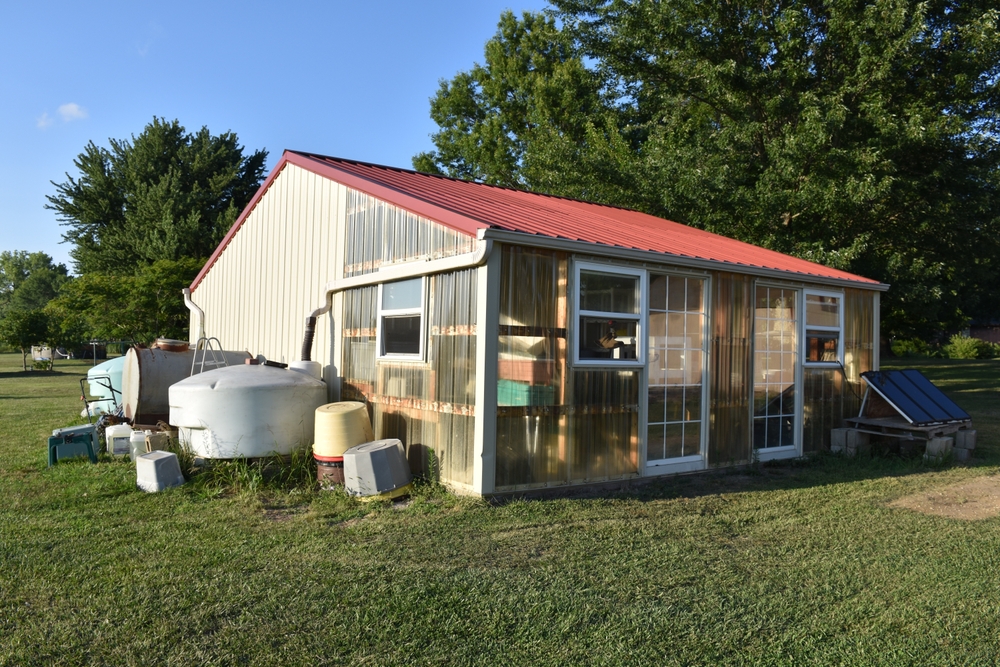A long-term water plan is much more than just a few cases of water bottles in a closet and, for most families, involves water sources, procurement, treatment, transportation and storage. The human body is mostly water, and we can perish within a few days without it.
Any emergency that takes down the electrical grid also takes water treatment plants offline. Waterborne illness and disease then become a second disaster within the initial disaster.

As I assess the emergency preparedness of families, they usually have weapons and ammunition, a medical kit, shelter, and food stores, but they often fall short in creating a realistic water plan. No household is prepared without water and what they need to go get more water, make it safe to drink, and get it home without an automobile. As long as that is your end goal, you’re on the right track.
Water is a huge deal, especially out west. It’s so important that it is a major factor in choosing where you live or buy property.
Evaluating Municipal Water Sources
Ideally, you want to live someplace where your water supply is unlikely to be interrupted. This will help ensure stability in a disaster.
To ensure the best chance that water will keep coming out of the tap in an emergency, you need to choose a municipality that features an end-to-end gravity-fed water system. They aren’t impossible to find. Surprisingly, much of New York City falls under this category.
While an end-to-end gravity-fed water system helps ensure that water will continue to flow from your tap in an emergency, the water still may not be safe to drink if the water treatment plant has been without electricity for several hours. If that happens, your municipality will issue a boil water notice.
Even if you have end-to-end gravity fed water, sediment stirred up within the water lines can make tap water unsafe to drink. This can happen in an earthquake, due to water line breaks or even due to your fire department fighting big fires or performing maintenance on the fire hydrants. When sediment gets stirred up in your water lines, the water that comes out of your tap will be muddy or cloudy. When that happens, the water needs to be made microbiologically safe before consumption.
Wells
Having your own spring or well and the equipment you need to draw water from it even if the electrical grid goes down is another way to ensure your home water supply.
If you have a spring or well, you will want to keep some water test kits and well treatment supplies on hand. You’ll also want to draw water and store it in a water tank or cistern just in case it stops producing. This will ensure that you have water to use until you can restore the flow of water.
Even if you don’t own a spring or well, there may be wells nearby that you may be able to use with the permission of the owner. Wells are typically mapped by the county and the maps of wells in your county may be accessible online. Mine are, and so are the names of property owners.
Surface Water Sources
Lakes, rivers, ponds and canals are all sources of surface water. Water from these sources must be treated to make it potable.
When visiting surface water sources, keep an eye out potential food sources they may support because they often support edible fish, birds and animals.
In some states, it is legal to capture some amount of the rainfall collected from your rooftop, however, most roofs are covered in dust, dirt, biomatter, and bird and rodent feces, so rainwater collected from roofs must be treated before use unless the roof has been covered by a clean tarp while raining and every surface that the rainwater touches during collection is clean.
Most roofs also contain heavy metals and volatile chemicals in roofing materials, adhesives, sealants, fasteners and metal flashing. Unless your roof has been specifically designed to be a safe water catchment, it is probably safe to use collected from it for gardening, but not for human consumption without removing those chemicals and removing some of them can be trickier than most people think. Even distillation may not remove volatile chemicals with boiling points near that of water.
Rooftop Water Tanks
Buildings taller than a few floors usually have to have water pumped up into a storage tank on the roof to develop sufficient water pressure. When the power goes out, the pumps stop working. Once the rooftop tank is drained, it cannot be refilled until power to the pumps has been restored.
Water procurement is the process of finding and collecting water.
Water Collection Containers
Water weighs 8 Lbs per gallon, so a 5-gallon water can tip the scales at 40 Lbs and a full 55-gallon barrel weighs 440 Lbs! If you have elderly, disabled or children in your household, you may want a siphon and at least a couple of water jugs that are light enough for them to handle.
Water Transfer Pump and Hoses
A water intake hose should have a special screen and a float. On the best screens, the intake holes are on the top, so they don’t suck up mud or silt and a float that keeps the intake away from the bottom of the stream, pond or lake. The screen helps keep out sticks and other organic matter.
Handcart, Dolly or Wagon
You need to haul that water home and it’s deceptively heavy, so mechanical advantage is your friend. In a long-term disaster, you may not be able to buy gasoline for your car or truck to haul water, so it’s best to be able to haul water on foot.
Do you live in a third-floor apartment only accessible by stairs? If so, hopefully you’re in good shape. If not, you’re going to need a stair climber dolly or a friend with a strong back or you’re going to have to rig a block and tackle to haul the water up there.
Water Treatment
When we talk of water treatment, we usually mean water disinfection or making water microbiologically safe to drink.
Prefiltration
Water can be prefiltered by running it through a coffee filter or two layers of tightly woven t-shirt material. If the water is muddy, it can be prefiltered by pouring it through a Millbank bag, which is a reusable canvass bag used for this purpose.
Prefiltration, settling and the use of coagulants and flocculants extends filter life, improves the effectiveness of chemical water treatment and UV water treatment. These methods also help clarify water and are the first steps toward improving taste and smell.
Settling & Sedimentation
If water is cloudy or muddy, it needs to be settled. By swirling the water and then letting it sit, many of the particulates will drop out of suspension through the process of sedimentation.
Coagulants & Flocculants
Coagulation is a chemical process. Aluminum sulfate and potassium aluminum sulfate (potash alum) are coagulants.
Flocculation is a physical process that promotes the clumping or agglomeration of the neutralized suspended particles to form flocs. As the flocs stick together, many of them fall out of suspension as sediment. Others float to the surface. Either way, they are easier to remove them than when they were held in suspension and repelling one another.
Natural flocculants include starch, chitosan and alginate. Synthetic flocculants are petroleum-based polymers such as polyacrylamides, polyamines and polyethylene oxide.
Sometimes water treatment chemicals include coagulants, flocculants, or some combination thereof. Chlor-Floc and P&G Purifier of Water are two examples of coagulants and flocculants combined mixed with chlorine-based halogens. They are useful in treating turbid (cloudy) water as they cause biomatter to drop out of suspension so the halogen can more effectively kill microorganisms in the water.
Heat Pasteurization (Boiling)
Bringing water to a rolling boil for one minute (3 minutes above 6,500’) is the gold standard for making water microbiologically safe to drink. Boiling water is the most idiot-proof method to get the job done, so little wonder boiling is the method of water disinfection recommended by the CDC.
The downside of boiling water is that it takes fuel, but a WAPI (Water Pasteurization Indicator), a plexiglass tube with a wax pellet that melts at 158° F, will decrease fuel consumption during boiling.
To understand the downsides of some of the most popular water filters on the market, please read my article Survival Water Filters – What to look for and what not to buy!.
People who don’t know what they are talking about use water purification and water filtration interchangeably, but the EPA has written very specific definitions for what a “water purifier” is and what a “water filter” is.
A water filter must achieve a “4 Log” reduction in contaminants, meaning it must remove 99.99% of contaminants. No more than one part in 10,000 can remain. A water purifier must achieve a “6 Log” reduction in contaminants, meaning that I must remove 99.9999% of contaminants. No more than one part in 10,000,000 can remain. So a water purifier is 1000x as effective as water filter. (Gyllenskog, MPH,LEHS,DAAS, CDR, USPHS (Ret), 2023)
Chemical Disinfection
Chlorine and iodine-based halogens have long been used to chemically disinfect water. The downsides are that the chemicals lose their potency over time and need frequent rotation. This can be overcome by using a chlorine generator, which uses a solar panel to charge a battery which is then used to make a chlorine solution from table salt (sodium chloride) via electrolysis.
UV Water Treatment & Solar Water Pasteurization
There are several devices on the market that use UV light to disinfect water, or you can use the sun and PET bottles to do the job via the SODIS method.
People often ask me how much drinking water they should store. Unfortunately, much of the time, the amount of water a family can store is limited by available storage space or available funds. So, for these folks, the answer is to store as much as they can, understanding that they will probably need at least 2 gallons of water per day, one for drinking and cooking and another for hygiene and laundry.
I should caution you though. According to the EPA, the average American uses 82 gallons of water per day. (EPA, 2025) While it is possible to get your water usage down to a gallon or two, or even less, per day, it takes practice. If you have been backpacking in desert for decades, you will have much better developed water conservation skills than someone who hasn’t. Expecting to live off 2 gallons of water per day without any practice probably isn’t realistic.
You will probably use 5-gallons of water the first time you take a shower. But with practice, you will learn to wet your body, then soap up, then wash off the soap. You’ll also learn how important it is to use a washcloth to conserve both water and soap.

Read my article How to Store Water for More than 25 Years Without Rotation. It covers how to properly choose containers, properly disinfect them, and properly store and access your water storage.
Rotation
Properly stored, water will still be biologically safe to drink in 25 years or more. Follow the instructions in my article on How to Store Water for 25 Years Without Rotation.
Summary
Epidemics of waterborne illness are frequently “disasters within disasters” as events that take the power grid down also take water treatment plants offline, so everyone should have a comprehensive water storage plan.
A water storage plan should encompass:
- Nearby Water Sources
- Water Procurement Methods & Equipment
- Water Treatment Methods, Equipment & Supplies
- Water Storage Equipment & Supplies
Properly stored water can be stored in excess of 25 years without rotation, so get to it!






References
EPA. (2025, March 24). Statistics and Facts. Retrieved from epa.gov:
https://www.epa.gov/watersense/statistics-and-facts
Gyllenskog, MPH, LEHS, DAAS, CDR, USPHS (Ret), M. (2023, November 6). Filiters vs Purifiers. Basics of Emergency Home Water Storage. North Logan, UT, USA: Max Gyllenskog.
Read full article here


